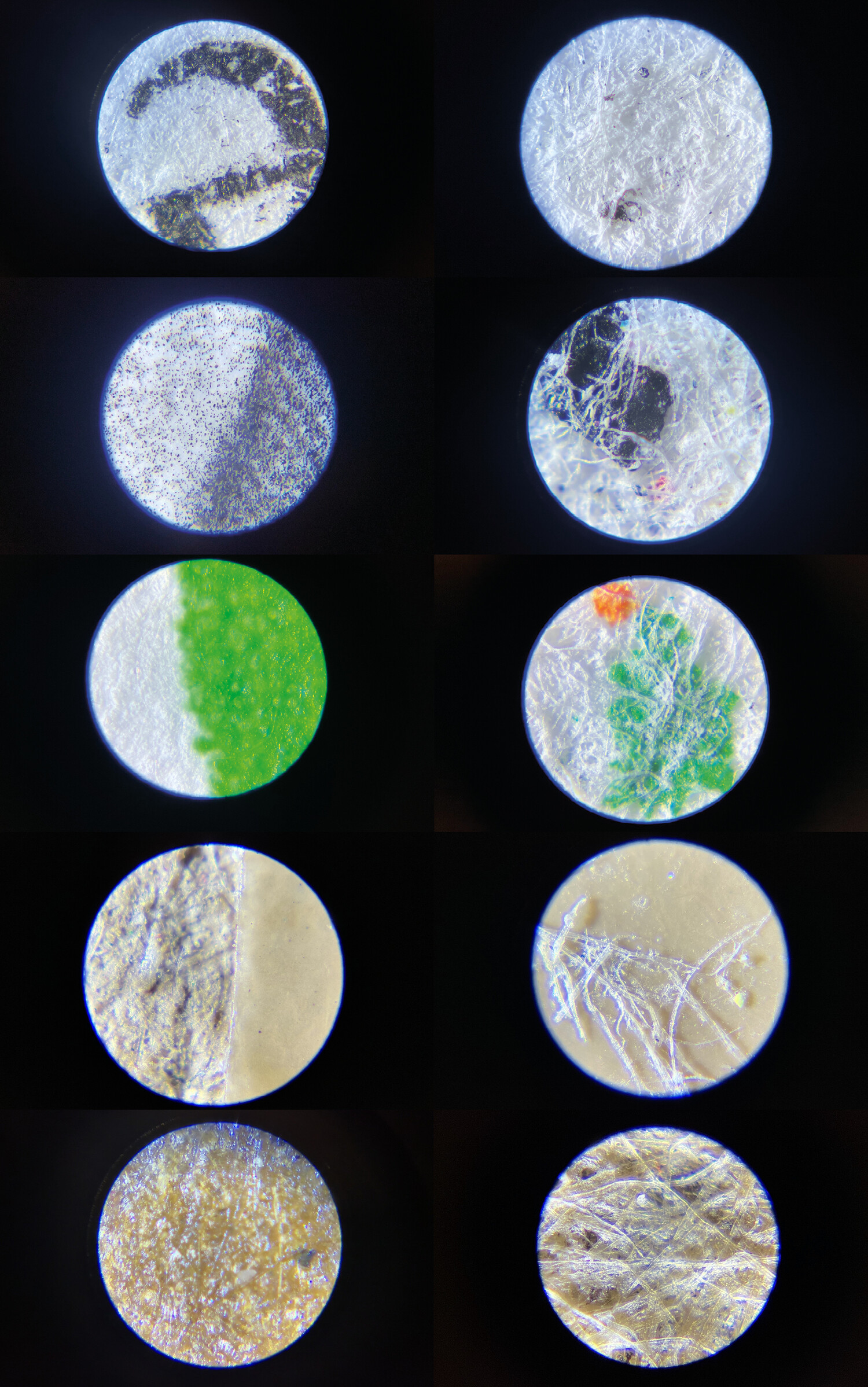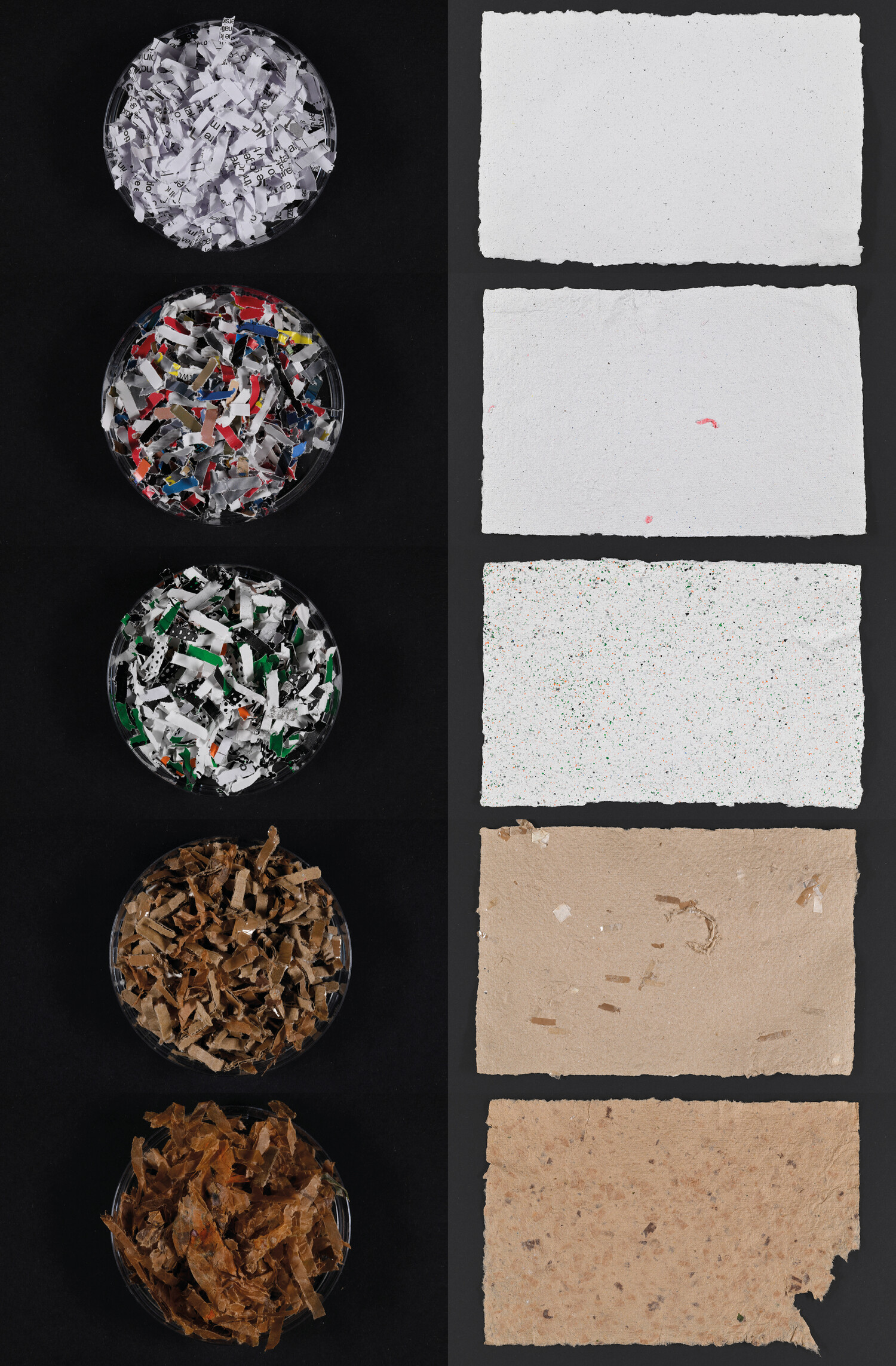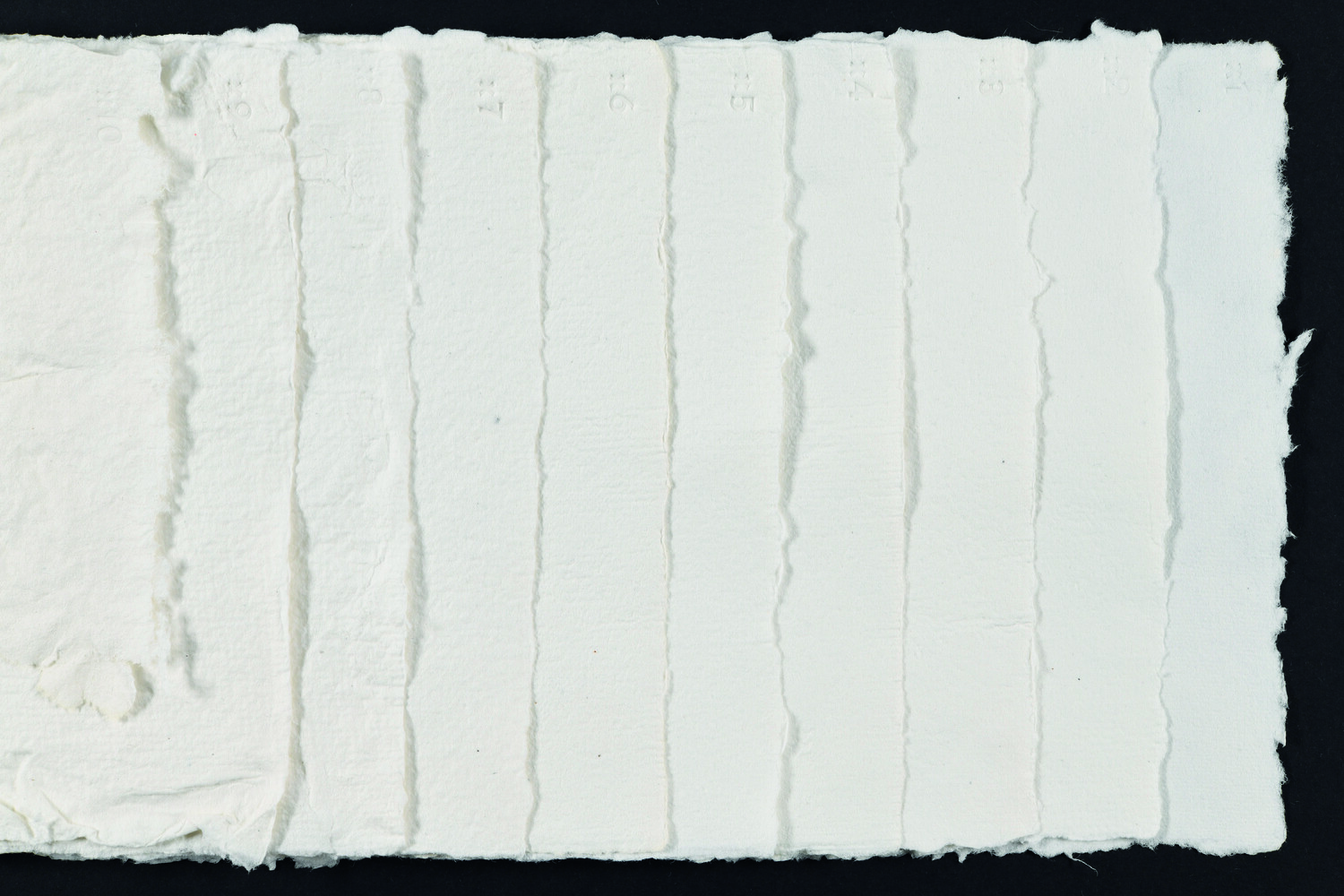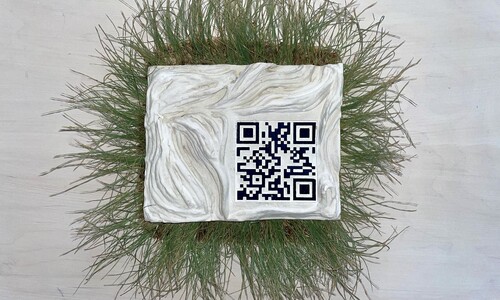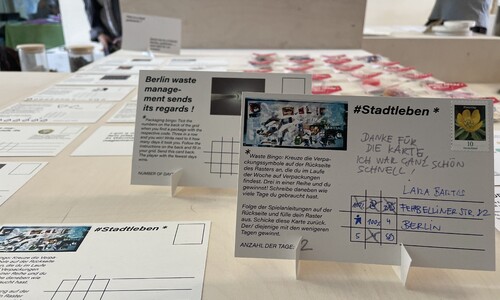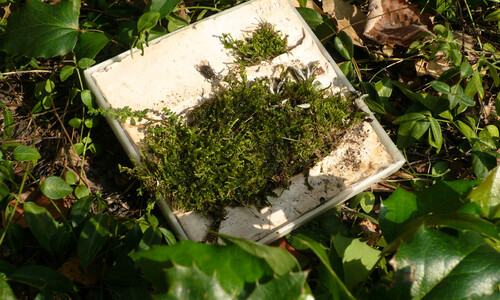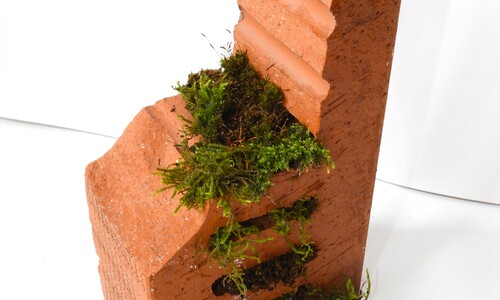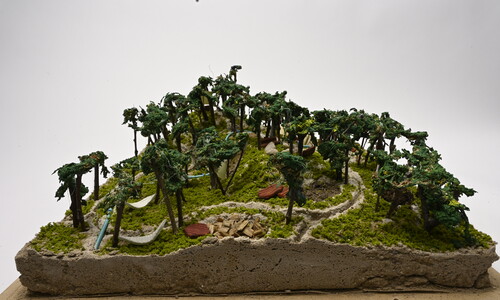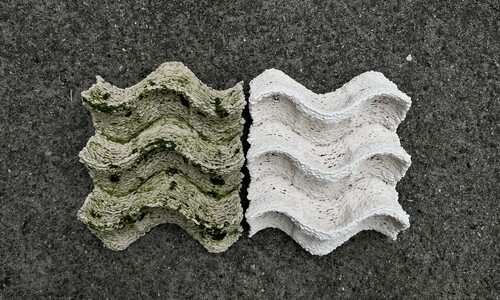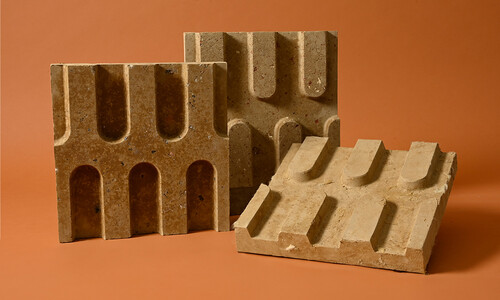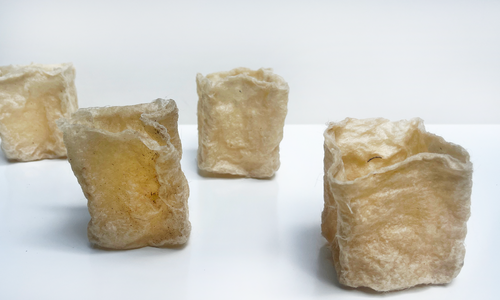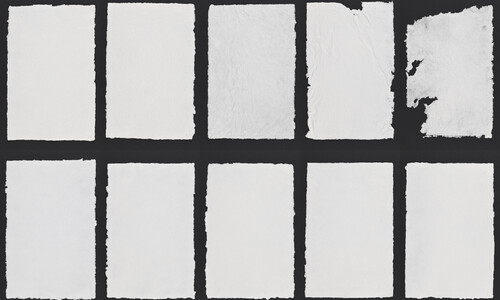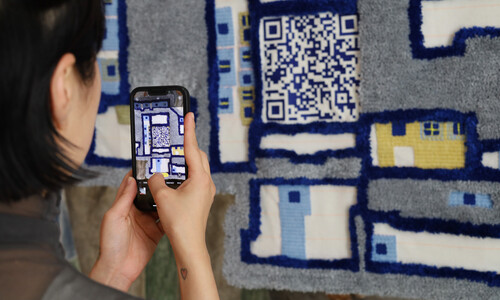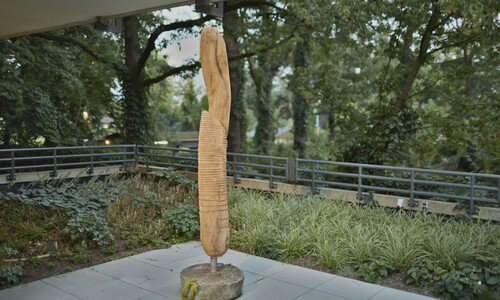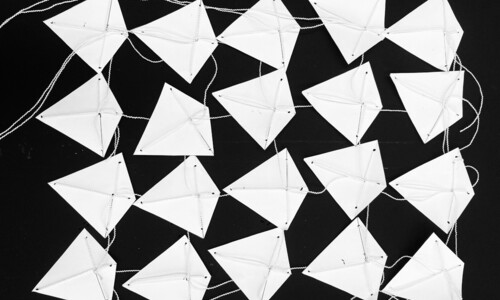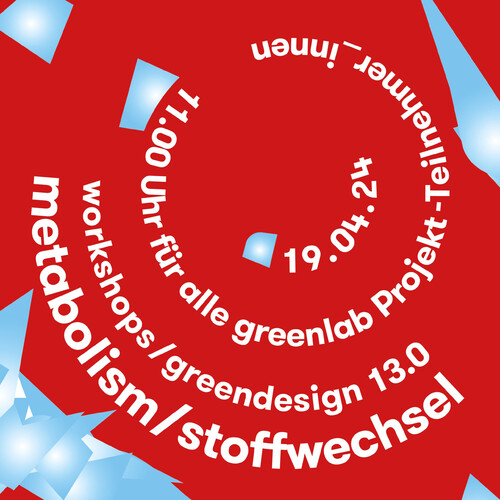On the first table, there are 10 sheets of paper. The changes in the paper are subtle and hard to recognize at first, but gradually they become apparent. The papers are made by shredding new paper, grinding it with water into a pulp, scooping it into a mold, and making paper from it again. This process is repeated a number of times, and gradually the fibers of the paper become shorter and the texture rougher. I wanted to explore and visualize the subtle changes that occur with the iterations, revealing the characteristics and limitations of the material and allowing people to think about paper recycling in a new way.
On the second table are five different types of contaminated paper waste and five sheets of recycled paper. Each type of paper waste was recycled into new paper in the same way as in the first work. But this time the investigation is not about changes of the same, but how different types of paper waste produce different results depending on their level of contamination.
